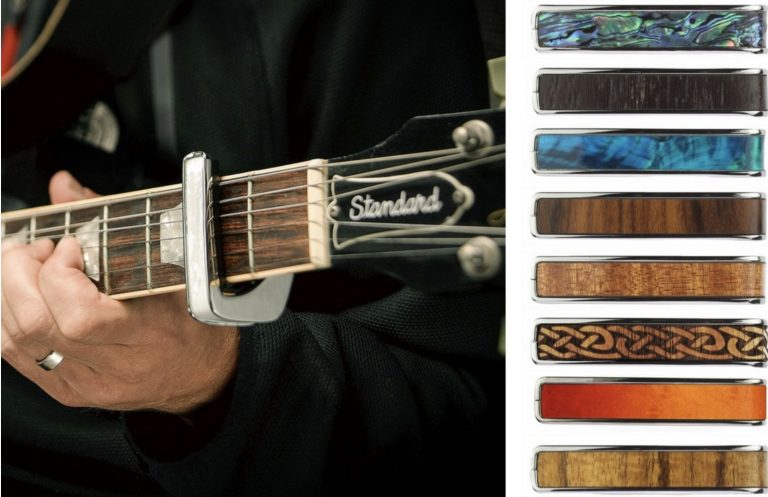There are countless reasons to learn the guitar. Whether you lean towards the soothing sounds of an acoustic, or the heavy, distorted notes of an electric, playing guitar has a number of benefits.
Like other musical instruments, playing guitar can improve our mental health by reducing our stress and anxiety. Mastering the scales can also raise your confidence and strengthen your multitasking abilities. Most important of all, learning to play the guitar is fun!
Beginners may be surprised to know that playing guitar requires more than the instrument itself. Both acoustic and electric varieties come with several accessories. You can pick and choose the style that works best for you and your musical interests.
Story Stages
Capos
Guitars have three basic parts; the body, the neck, and the headstock. The neck is divided into 21 to 24 spaces, known as frets. Pressing the six strings along these frets will produce different notes.
A capo is a clip-on accessory that enables players to shorten and change the pitch of the strings. Players place the capo over a fret and play the lower notes like normal. Capos can also hold the strings usually pressed down by the pointer finger. This gives the player more flexibility while playing more complex barre chords.
Capos come in many designs, and some are easier to take on and off than others. Trigger capos can be released and moved around with one hand. Lever style capos have a screw mechanism that holds the capo in place. Capos come in a variety of finishes,colors, and materials.
Picks
Some acoustic players can get by using their fingers, nearly all electric guitar players use picks. These teardrop-shaped accessories allow players to produce clearer, sharper sounds.
Picks vary in thickness. Thinner picks are less than half a millimeter wide and are best for strumming several strings at once. Thin picks have a lot of give and flexibility, so they are less likely to break the strings. These qualities make thin picks the optimal choice for beginners and acoustic guitar players.
Advanced players may prefer the control given by thicker picks, which can measure up to one and a half millimeters in thickness. Since thicker picks are best for playing single notes, they are commonly used by lead guitarists.
Most picks are held in place with the pointer finger and thumb. However, thumb picks wrap around the thumb, leaving the pointer finger free. This pick style is best for music genres with intricate string work, like flamenco and blues.
Picks come in a variety of patterns and colors, and are a great way to express yourself. They are also somewhat disposable. Most picks will wear down with heavy use. For this reason, players often buy picks in bulk.
Straps
While guitars can be played while standing, this won’t be possible without a strap. Since a strap’s width, length, and style can greatly impact a player’s comfort, it’s important to choose a strap very carefully.
Wider straps distribute weight more evenly across the body, which is important if the guitar is very heavy. Players may also have preferences on where their guitar hits while playing upright. Most straps are adjustable, but taller or shorter than average players may need to purchase special straps to get the right fit.
While electric and acoustic guitar straps have similar designs, there is a distinct difference in how they are attached to their respective instruments. Both acoustic and electric guitars have strap pins at the base of the body.
Often, an electric will have a second pin at the top of the body. Many acoustics do not. In this case, the player will need to string a piece of lace through the strap hole and tie this around the neck of the guitar.
Stands
Guitars are delicate instruments. They can become warped or damaged simply by being stored in the wrong way. They are also bottom heavy, which makes them prone to tipping. Guitar stands keep guitars in an angled, upright position that preserves the material and reduces pressure on the strings.
Stands can be minimalistic and practical, or large and beautiful enough to serve as a piece of decor. If you have several guitars, consider a multi-guitar holder. These stands allow the guitar to stand sideways. Not only does this keep all of your guitars out of harm’s way, but it also saves a lot of space.
